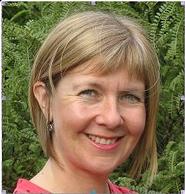About Oral and Maxillofacial Surgery
Mercy Hospital is a not-for-profit surgical hospital committed to delivering 'exceptional care that makes a difference' to Otago and Southland residents. Independent specialists provide oral and facial surgery that includes the surgical treatment of injuries and defects involving aspects of the hard and soft tissues of the mouth, teeth, gums, jaw and neck. This surgical service is provided at our facility by the following medical specialists. For further information please seek a referral through your GP or contact your preferred specialist directly.
Procedures / Treatments
Dental implants
Impacted tooth extraction
Paediatric dentistry
Salivary gland surgery
Parotidectomy: an incision (cut) is made in front of the ear and runs down below the jaw line. Part or all of the parotid gland is removed.
Superficial parotidectomy: an incision is made in front of the ear and runs down beneath the ear lobe. The superficial (top) lobe of the parotid gland is removed.
Submandibular gland surgery: an incision is made just below the jaw bone and the submandibular gland removed.
Temporomandibular joint (TMJ) surgery
Arthroscopic: several small incisions (cuts) are made over the joint in front of the ear. A small telescopic instrument with a tiny camera attached (arthroscope) is inserted, allowing the surgeon a view of the joint. Small instruments can be inserted into the other cuts to free up the joint by e.g. removing adhesions and scarring, or repositioning a disc.
Arthroplasty (open surgery): an incision is made in front of the ear, giving the surgeon access to reconstruct the joint by e.g. smoothing joint surfaces, repairing discs or removing diseased tissue. If a joint replacement is necessary, a second incision under the angle of the jaw may be required.
Wisdom tooth extraction
Wisdom teeth are the third molars right at the back of your mouth. They usually appear during your late teens or early twenties. If there is not enough room in your mouth they may partially erupt through the gum or not at all. This is referred to as an impacted wisdom tooth.
Due to their location wisdom teeth can be difficult to clean and are more susceptible to decay, gum disease and recurrent infections. They can cause crowding of teeth and, on rare occasions, cysts and tumours develop around them.
Your dentist will advise if some or all of your wisdom teeth need to be removed. Wisdom teeth will usually only be removed if your dentist believes they will be a significant compromise to your oral health.
This information has been provided by https://www.healthpoint.co.nz, helping people better understand and use New Zealand health services.







